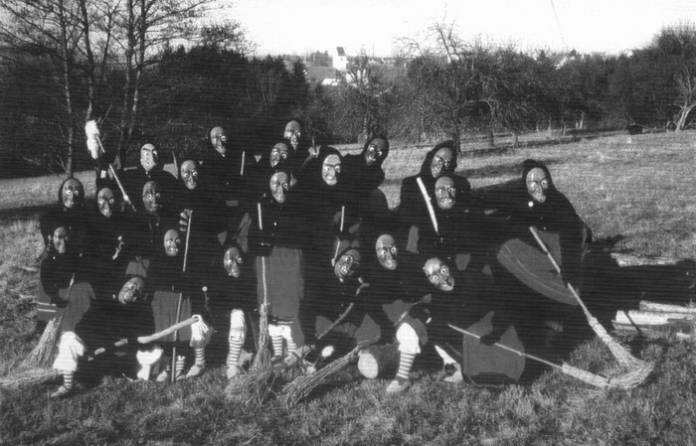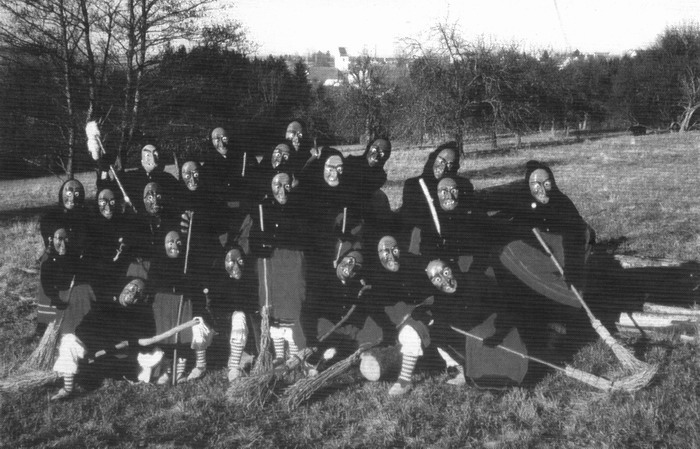
Editor’s note: It’s hard to be a renter in San Francisco these days; some landlords are constantly looking for ways to squeeze out more rent money, to replace long-term tenants who are paying below-market rent, or to make your life more difficult so that you’ll leave. Tenant lawyer Dave Crow is here to answer your questions every Wednesday at 48hills. You can send him queries at askdave@48hills.org.
Is there some type of seven-year rule that benefits landlords if they do not raise the rent for seven years and then increase it all at once?
I ask this because when I moved into my flat in 2011 the landlord said that generally he wouldn’t raise the rent unless someone stayed for seven years, at which point he would raise it by about 7%.
Then, about two weeks ago I was out with some friends who live my neighborhood and their landlord had just raised their rent by about 10% after they had been living in their flat for seven years.
Then just last night I ran into a neighbor across the street who told me that she has to move after having lived in her building for seven years because the landlord had raised the rent. We all live in buildings that are covered by rent control.
What is going on?
By 1978 the residential real estate market in San Francisco had changed forever. Gone were the days when an investor bought an apartment building based on a conservative projection of its future income and strictly evaluated the building based on its net operating income. A new breed of rapacious real estate brokers–many of them followers of Werner Erhard’s EST (a quintessential me-generation, greed-is-good pseudoreligion popular in the 70s)–realized that San Francisco real estate could be sold without regard to old, stuffy “market value” considerations, despite climbing interest rates of 11% and 12%.
A new breed of buyers agreed. Doctors and dentists began to invest in large downtown apartment buildings. They didn’t care about cash flow as long as they could write off the substantial debt service. They chanted the mantra “Location, location, location.”
Of course the big vipers, like Angelo Sangiacomo and Gunther Kaussen knew they could have their cake and eat it too. Sangiacomo is known as the Father of Rent Control because he steadfastly refused to cease doubling, tripling and even quadrupling rents for his 1,700 units. Kaussen, described by Der Spiegel as “the world’s biggest slumlord” with 2,000 units in the Tenderloin, crushed his tenants with similar practices.
Later that year, rumor grew of a shadow in the East, whispers of a nameless fear, and Rent Control now emerged. Its time had come–in Berkeley and Davis and Cotati kingdoms.
In 1979 the interest rates hit 13% and landlords’ lairs echoed with this refrain: “What news from the South, oh sighing wind, do you bring to me at eve? Where now is Santa Monica? Tenants vote and I grieve.” After Santa Monica voters passed a tough Rent Control Ordinance that included vacancy control – that is, rent controls that stay in place when an apartment is vacated — in April, 1979, the San Francisco Board of Supervisors rushed to enact the anemic Rent Ordinance we have now.
Landlords were frightened, scared witless. Many of them lacked the ability (or the literacy) to analyze and interpret the new Rent Ordinance. (While I sympathize to a degree, one can often rely on plain meaning to get by.) Some landlords were just too cheap to hire lawyers and their realtor advisors, hampered by the maximum IQ licensing requirement, were no help either.
After a long night of cocaine and disco binging at Henry Africa’s, a group of disgruntled landlords, lamenting the enactment of rent control, careened over to Anton LaVey’splace, where they and assorted Satanic worshipers conducted a voodoo ritual/seance designed to purge the city of all tenants. Upon absinthe blurred reflection the next day, the landlords, realizing that driving tenants from the City might disrupt their income streams, decided instead to use their newfound occult skills to understand the Rent Ordinance and thwart its supporters.
Thus, the Small Property Owners Occult Knowledge Society (SPOOKS) was born.

In its heyday in 1980-83, SPOOKS attracted a membership of between 50 and 200 landlords and their supporters. In some circles SPOOKS was more popular than EST. Their monthly meetings at Trader Vic’s were notorious because members never removed their masks and the only nourishment one could take was through a straw. Evidently the meetings were conducted in hushed whispers punctuated by slurping and demented cackling–truly occult.
Not much is known about the SPOOKS philosophy or the Society’s impact on the landlord community at large. There aren’t many records left and, like EST, no one will admit to former membership in the organization.
But you have stumbled upon a persistent SPOOKS holdover from the past–The Rule of Seven.
We will never know whether The Rule of Seven was devised as a tenant intimidation technique or it was an occult interpretation (misunderstanding) of the method of banking rent increases. Landlords were not allowed to bank, that is save up increases to impose them all at once, until 1982. From 1982 to 1984, the annual allowable increase that could be imposed was 7% (Hear the thereminin the background?) per year. Rent Ordinance §37.3(a)(2) now provides:
Banking. A landlord who refrains from imposing an annual rent increase or any portion thereof may accumulate said increase and impose that amount on the tenant’s subsequent rent increase anniversary dates. A landlord who, between April 1, 1982 and February 29, 1984, has banked an annual 7% rent increase (or rent increases) or any portion thereof may impose the accumulated increase on the tenant’s subsequent rent increase anniversary dates.
After 1984 a “seven-year wait and bank” strategy may have been effective because a landlord could increase the rent by 28%. But think about it, the strategy would assume a tenant would live in a unit for seven years, an assumption that is not corroborated by statistics. If the initial rent was $1,000.00 in 1984, the landlord would also lose $10,779.40 in accumulated income over seven years.
These days, the rent increases are formulated based on 60% of the annual local Consumer Price Index. If you moved into your unit in 2011 and the landlord never increased the rent, now, he could only bank an increase total of 12.1%. Again, the landlord loses the accumulated income along the way.
Therefore, waiting seven years to increase the rent is a strategy of “Cut your nose off to spite your face.” It’s a stupid, vindictive and financially unsound practice that could only be justified by ignorant superstition, evidence that some landlords have SPOOKS in their brains.
Try to identify your landlord in the photos. Then read more about the history of San Francisco rent control in 1980-1991: Rent Control Wars, by Randy Shaw, and from the landlords’ perspective, The Birth of Rent Control in San Francisco, by Jim Forbes & Matthew C. Sheridan.
How to Help Dave Crow Help You
Dear Readers:
Every once and awhile I will have to guess at a detail or two when I attempt to answer your questions. For example, I will often assume that a building was built before 1979, given the context of a question. When I make that assumption, it’s highly likely that I will assume that you live in a rent-controlled unit and answer your question using the standard of the San Francisco Rent Ordinance. That could be a problem for two reasons. If your building was built after 1979, it is not covered by the Rent Ordinance. Worse, what if you don’t live in San Francisco?
So, I thought it might be a good idea to give you a short list of details to consider and/or include when you write me.
When was your building constructed?
If you don’t know, you can find out by using the SF Assessor-Recorder’s website to find out. If that site is being funky (not unusual) ask around. Finally, take a look at your building. Victorian? That’s easy. The difficult ones are buildings built in the 1960s and 1970s, the big square ugly boxes reminiscent of the shit they’re building these days.
How many units are in your building?
That seems like a no-brainer. But it’s not so easy if you live in a single-family dwelling in which the landlord rents rooms. The Rent Board might consider each room as a unit depending on the facts. The other common scenario is the single-family house with an illegal in-law. Rent controlled? (By that I mean, subject to annual allowable increases?) Yes. This is a two-unit building because Illegal units are covered by the Rent Ordinance.
Do you live in a house?
If the house was built before 1979, it is subject only to the just cause eviction provisions of the Rent Ordinance and the landlord can increase the rent as much as he likes…within reason. However, if your tenancy started before 1996, the house is subject to the price control provisions of the ordinance.
Do you live in a condominium?
This can be difficult to ascertain if you live in a converted building. Ask the landlord or check the Assessor-Recorder site above. Condos are legal single-family dwellings, usually only subject to the just cause eviction provisions of the Ordinance. There is an exception, see Tenant Troubles: Are The Buyout Terms My Landlord’s Offering Acceptable?
How old are you? Are you disabled?
This may be applicable if you are a protected tenant under the Rent Ordinance.
How long have you lived in your unit?
This could be important to determine if you have a protected status or, as in the example above, if your tenancy in a house or condo is subject to price control.
How much is your rent?
Often this is the most important detail because it usually points to the underlying motive of the landlord for taking whatever action he is taking–he thinks you’re not paying enough rent.
What does your lease say about it?
The lease controls the terms of your tenancy. It is always helpful to me to understand how to apply the law to your problem when I know if there is an applicable term in your lease. For example, if you are having a problem adding a new roommate, I need to know if the lease absolutely prohibits subleasing or if subleasing is subject to the landlord’s written consent. The ordinance is different for each scenario.
Details, details, details.
If the landlord is harassing you, I want to know how. Does the landlord like to watch you sleep? It’s important to understand if your lease has a clause prohibiting pets and you just adopted a baby gorilla. It’s also important to know about the gorilla because other laws may apply. Sometimes little details can shed light on an issue you may not know you have.
Obviously, this format has its limits. If you know your unit is rent controlled you can just say so. I want the gory details that make your case unique. They help make this column more interesting and fun.
Oh yeah, if you live in Oakland, I need to know that, because they have a different Rent Ordinance. If you live in Daly City, I also need to know that, because they don’t have jack to protect tenants except feudal (California) law.
I’m at 48 Hills to answer your landlord-tenant questions every Wednesday, so send them to me at Askdave@48hills.org
The opinions expressed in these articles are those of the author and do not constitute legal advice. The information provided is general in nature. Seek the advice of a tenant attorney for any specific problem or issue. You understand that no attorney-client relationship will exist with Dave Crow or Crow & Rose, Attorneys at Law unless they have agreed to represent you. You should not respond to this site with any information that you believe is highly confidential.

